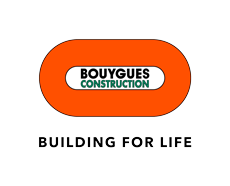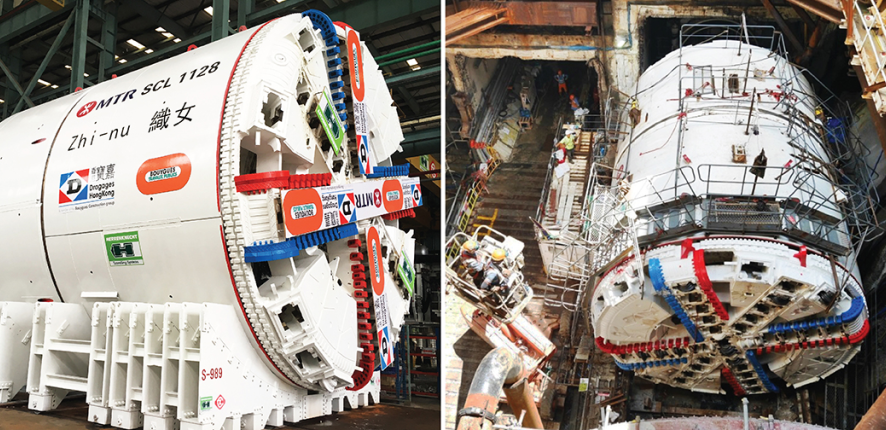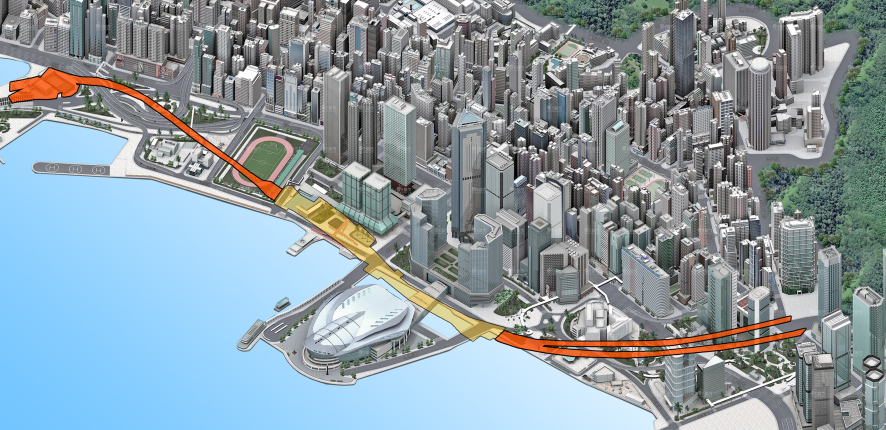Innovation: the first variable density tunnel boring machine in Hong Kong
The project
The two tunnels are part of major infrastructure projects currently under way in the city of Hong Kong, and will connect tourist areas with the business district. The two East tunnels, both around 540 metres long, will link the ventilation building and the new Exhibition Station on the Shatin to Central Link line. The two West tunnels, both around 450 metres long, will be excavated between the emergency exit from Fenwick Pier and the existing Admiralty station. Bouygues Construction will also construct the ventilation building associated with these projects.
Ultimately, the Shatin to Central Link line, running to a length of 17 km, is intended to improve Hong Kong's entire railway network by linking various existing lines. Once in service, it will help to improve road traffic flows and is expected to reduce travel time between the new territories and the city centre by 40%.
Complex soil types
To cope with the site's complex geological conditions, Bouygues Construction will use Hong Kong's first variable density TBM. This allows excavations to take place in shallow soil and also means that the density of matter at the TBM face can be adjusted in order to overcome problems such as varied soil types and limited earth coverage.
"Bouygues Travaux Publics has become a leading player in underground works following a series of technically complex projects, adapting to a wide range of geological types. This contract is further proof of our ability to overcome technical challenges and carry out large-scale infrastructure projects," said Philippe Bonnave, Deputy CEO of Bouygues Construction, in a statement.
An expert
Bouygues Construction is continuing its strong growth dynamic in the Hong Kong region. Its subsidiary Dragages Hong Kong completed the Cruise Terminal Building in the city in 2013 and is currently working on two rail tunnels for the high-speed line that will link Hong Kong to the 16,000-km national high-speed network, as well as on the first section of the sea bridge between Hong Kong and the cities of Zhuhai and Macao. In 2013, it also won the contract to build an underwater road tunnel, running for 4.2 km, which links the New Territories to Lantau Island (the international airport).



